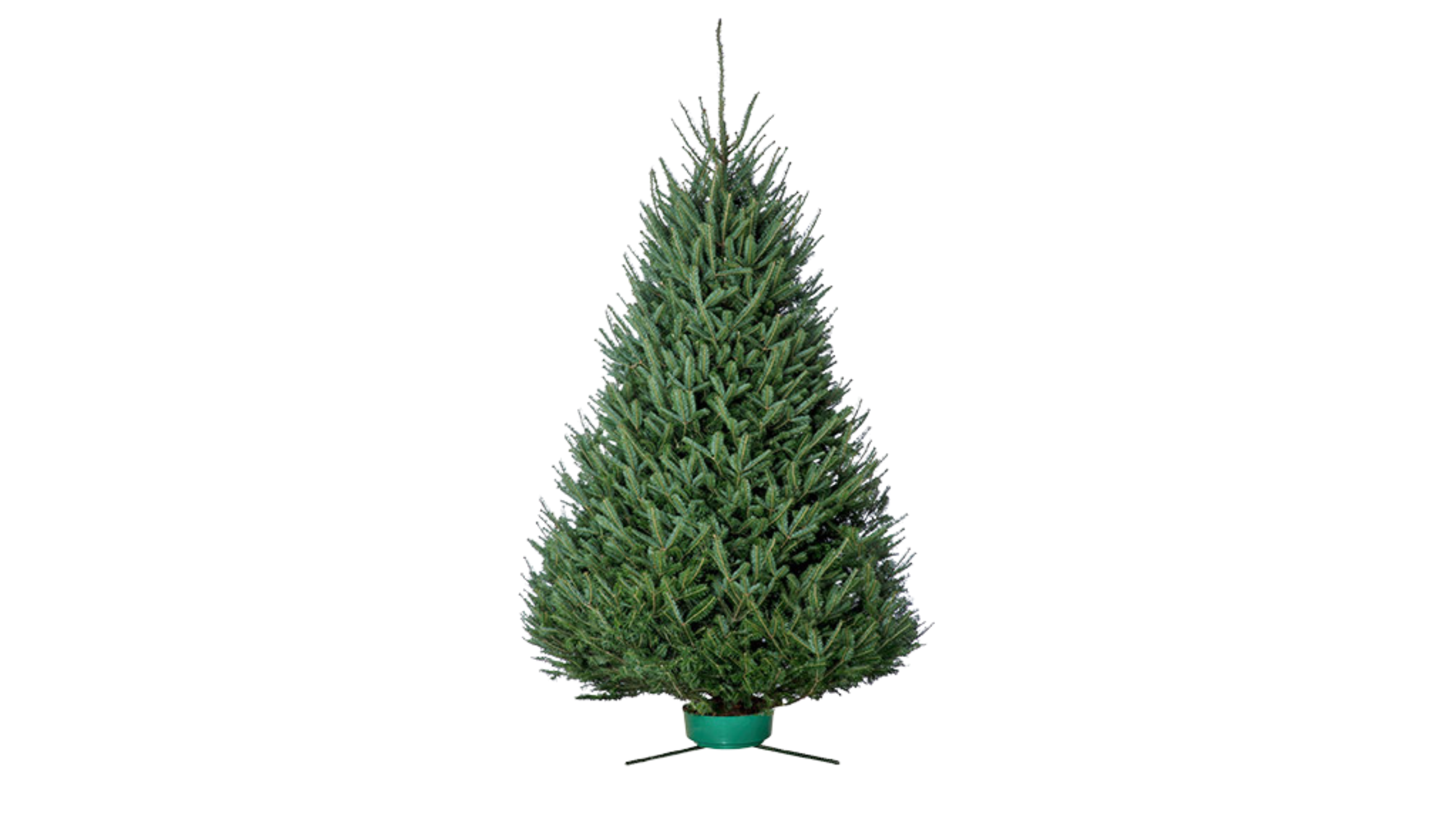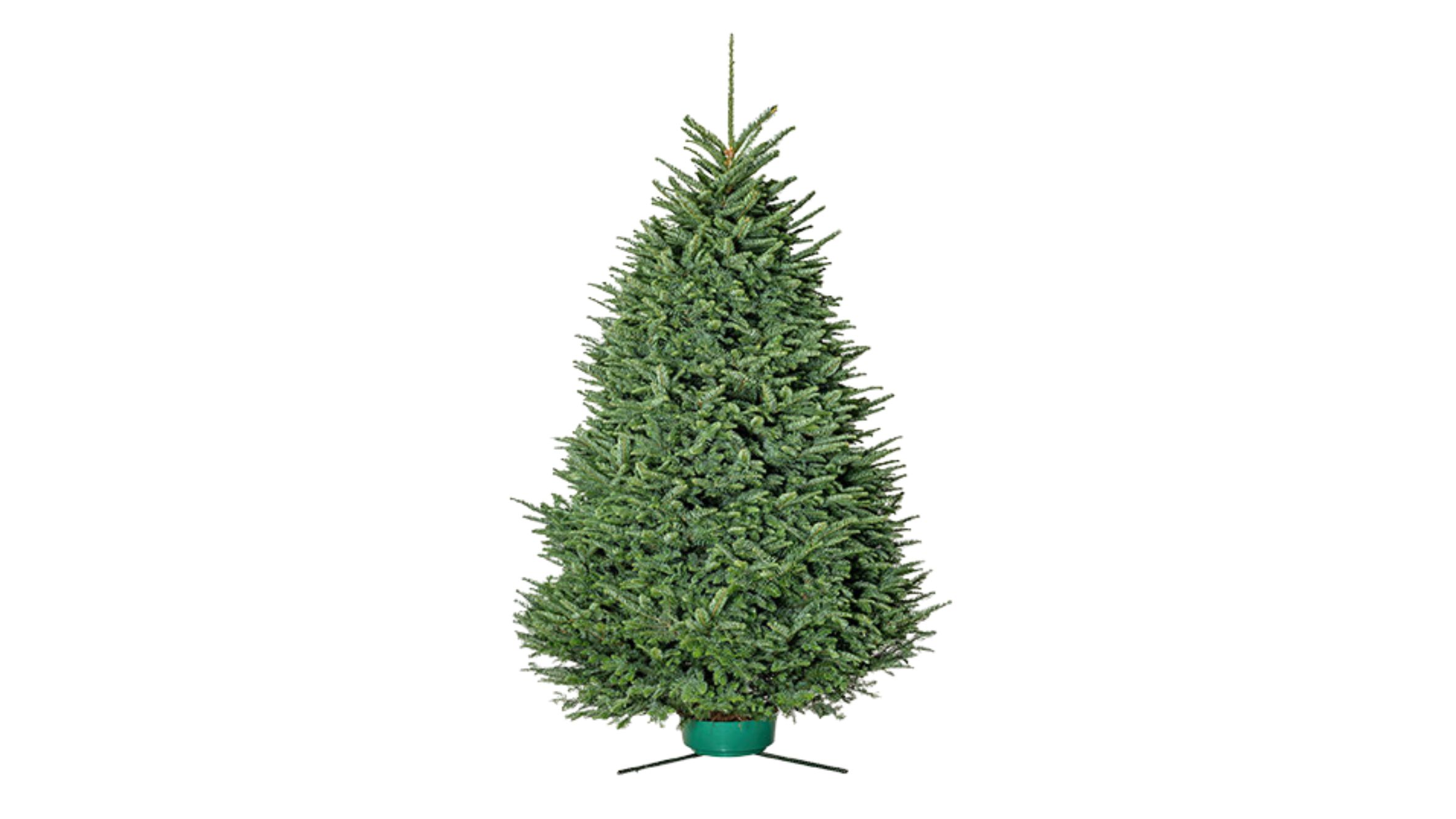"I'm a Christmas Tree Grower — These Are the Different Types of Tree to Know, and Which Look Best"
A crib sheet when shopping for your real Christmas tree this year, courtesy of growers and experts


I'll be honest, I don't know my Nordmann from my Noble for when it comes to the different types of Christmas tree. And it's important to know. While each type brings its own festive joy to your home, there are differences in not only how these trees look, but in other characteristics that will really affect how you're able to decorate them.
“In some Christmas tree-producing states, like here in Michigan, we grow several different varieties of Christmas trees," explains Elijah Maciborski, a real Christmas tree grower based in Michigan. "Each species has its own unique characteristics, so you may want to learn a bit more about some of the species you are likely to find. From the color, needle length and the scent to the strength of the branches for decorating."
With help from growers from the Real Christmas Tree Board, we've created your Christmas tree shopping crib sheet, so you know the different qualities of the most common types of tree, what each looks like, and how Christmas tree care differs.
As well as their visual characteristics, we've asked for guidance on the following points too:
- Strength of branches, so you know whether the tree can handle your heavier ornaments
- How long they last, as not all trees have the same shelf-life when cut
- How easy they are to find, as you won't find all types all over the country, necessarily
1. Balsam Fir

Balsam fir is a traditional Christmas tree choice, and known for being among the most fragrant of all species of Christmas trees. Balsam fir has relatively short and dark green needles and has excellent form.
How strong are their branches?
Branches are strong and good for hanging and displaying ornaments.
How easy are they to find?
Typically grown in Canada, New England, the upper Great Lakes and Pennsylvania; Balsam fir can be found at choose and cut farms in these areas and is also frequently stocked at most types of retail locations east of the Rockies.
The Livingetc newsletters are your inside source for what’s shaping interiors now - and what’s next. Discover trend forecasts, smart style ideas, and curated shopping inspiration that brings design to life. Subscribe today and stay ahead of the curve.
How long do they last?
When it comes to how long Christmas trees last, many types of fir Christmas trees last four to five weeks if properly cared for. The Balsam fir tree is one of them, meaning you can buy confidently around the start of December.
2. Fraser Fir

Frasier fir has the classic layered shape and blue-green needles with silvery undersides, making it one of the most popular species in America for classic Christmas tree ideas. Fraser fir is well known for having excellent needle retention.
How strong are their branches?
Frasier fir branches are stiff, meaning they can handle your heavier ornaments
How easy are they to find?
Fraser fir is widely available at all types of retail locations, typically east of the Rocky Mountains, and at choose and cut farms in the mountains of North Carolina, the Virginias, the upper Great Lakes and the Northeast.
How long do they last?
A Fraser fir should last four to five weeks, too.
3. Noble fir

Noble fir is a stately Christmas tree featuring short, blue-green needles and an attractive layered form. Noble firs are among the best for needle retention among all Christmas tree species, making it a popular choice for making Christmas wreaths and garland.
How strong are their branches?
Branches are stiff, making it a good tree for heavy ornaments.
How easy are they to find?
Grown in the Pacific Northwest, the Noble fir is one of the most popular species for Christmas trees and is widely available west of the Rocky Mountains and in many retail locations nationwide.
How long do they last?
Like other firs, the Noble fir can last four to five weeks.
4. Nordmann Fir

Nordmann fir is by far the most popular Christmas tree species in Europe and is quickly gaining in popularity in the US for its glossy, dark green needles which are darker than almost any other fir. They also have very little, or almost no fragrance, making it a good choice for someone who might be sensitive to scents. The branches are also present in a layered, or tiered fashion.
How strong are their branches?
Branches are sturdy and are good for hanging ornaments. The defined layers of the tree offer plenty of space for displaying
How easy are they to find?
Grown primarily in the Pacific Northwest, the Nordmann fir can readily be found in most all types of retail locations west of the Rockies; however, it may also be found in limited numbers in some northern states in the eastern US.
How long do they last?
Again the Nordmann fir should last a full five weeks, at least.
You can buy a Nordmann fir from Lowe's.
5. White Pine

White pines are a fluffier tree with dense, long, soft, green needles, and beautiful fragrance. White pines have excellent needle retention, making them another great option for wreaths, roping, or other decorative greenery such as for Christmas stair decor.
How strong are their branches?
Because of the softer branches, white pines will do better with light-weight ornaments or draping decorations, like tinsel, lights, and light-weight garlands.
How easy are they to find?
White pine is produced in the Midwest, Great Lakes, the Northeast, and the Appalachians and can be found at many retail locations east of the Rockies.
How long do they last?
White pines have a slightly shorter shelf life, but have good needle retention up to two to four week.
6. Douglas Fir

Douglas fir is one of the most popular Christmas tree species and has long been a traditional Christmas tree in the US. Douglas firs are dense trees with soft, light green needles and a very pleasant Christmas tree aroma.
How strong are their branches?
Douglas firs don't have as stiff branches as other firs, meaning you're better to stick to lighter-weight Christmas tree decorations.
How easy are they to find?
This species is one of the most widely available Christmas tree species at all types of retail locations from east to west and north to south, as it is grown in all major Christmas tree-producing states.
How long do they last?
Douglas firs should last at least three weeks, so you may want to buy in the first or second week of December.
You can order a Douglas fir from Home Depot.
7. Colorado Blue Spruce

Colorado blue spruce stands out for its lovely silver-blue color, with stiff, sharp needles and elegant shape. Bonus: the sharp needles make this a good option for people trying to keep their pets away from their tree.
How strong are their branches?
Colorado blue spruce branches are really stiff, and will hold your heavier ornaments with ease.
How easy are they to find?
Consumers will find the Blue Spruce east of the Rockies and most frequently at retail locations in northern states.
How long do they last?
A blue spruce will last around three weeks.
8. Murray Cypress

The Murray Cypress has dark green-gray needles and has very full branches. This species also has very little aroma, making it another great option for people who are looking for a less fragrant tree.
How strong are their branches?
Murray Cypress branches are feathery and full. While they can handle some ornaments, they are not as strong as others and might not be the best choice for heavier or larger ornaments.
How easy are they to find?
Murray cypress trees are becoming a popular species on choose-and-cut farms in southern states. All cypress species of Christmas trees are not grown for the wholesale market, so must be found locally in the south.
How long do they last?
Murray cypresses are super long-lasting — you could buy one before Thanksgiving even and it'll last until Christmas.
FAQs
Which type of Christmas tree retains its needles best?
"The ability for any Christmas tree to retain its needles is impacted by many factors, thus difficult to rank species by species," says Marsha Gray, executive director of the Real Christmas Tree Board. "The most important factors in needle retention include how a tree was cared for or displayed at the retail setting (ie: in water in hot dry climates, in shaded areas out of the sun), how it is cared for in your home (access to water, displayed away from sources of heat or sunny windows) and finally the species itself."
However, as a general rule of thumb, true firs (such as Fraser, Noble, Nordmann) are noted for very good needle retention. "Pines, such as Scotch pine, are also known for good retention," Marsha adds. "Spruce varieties are generally recommended for slightly shorter display periods, of two to three weeks."
How do you care for different types of Christmas tree?
“Care for a fresh Christmas tree is exactly the same for all species," explains Christmas tree grower Elijah Maciborski. "The steps are simple, yet important to keeping your tree fresh all season long."
Start by getting a fresh cut on the trunk when you pick out your tree. This allows your tree to drink much-needed water – without the fresh cut, your tree cannot rehydrate. "Place the tree in water as soon as you get it home and make sure your stand has a large water reservoir," Elijah says. "Check water level daily (several times a day in the first few days) and keep water level in the stand above the base of the trunk. Keeping a tree regularly watered also helps extend that wonderful real tree scent and promotes needle retention all season long.”

Hugh is Livingetc.com’s editor. With 8 years in the interiors industry under his belt, he has the nose for what people want to know about re-decorating their homes. He prides himself as an expert trend forecaster, visiting design fairs, showrooms and keeping an eye out for emerging designers to hone his eye. He joined Livingetc back in 2022 as a content editor, as a long-time reader of the print magazine, before becoming its online editor. Hugh has previously spent time as an editor for a kitchen and bathroom magazine, and has written for “hands-on” home brands such as Homebuilding & Renovating and Grand Designs magazine, so his knowledge of what it takes to create a home goes beyond the surface, too. Though not a trained interior designer, Hugh has cut his design teeth by managing several major interior design projects to date, each for private clients. He's also a keen DIYer — he's done everything from laying his own patio and building an integrated cooker hood from scratch, to undertaking plenty of creative IKEA hacks to help achieve the luxurious look he loves in design, when his budget doesn't always stretch that far.